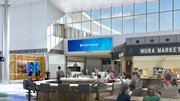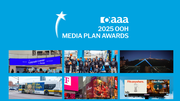Article
How to increase digital signage engagement through dayparting
TV networks and quick-service restaurants have long used dayparting; here's how it can work for digital signage use-cases.

March 14, 2013
By Gary Davies
Executive Vice President, Sales and Marketing, ADFLOW Networks
TV networks have long understood the value of "dayparting" — offering time-appropriate messages based on the changing interests or demographics of the audience throughout the course of a day.
Consider Saturday morning cartoons. The networks know the audience is primarily kids, and that toys, games and cereals will appeal to this group. By contrast, the Saturday afternoon viewer is likely a sports-minded male. We see a shift in advertising content to beer and pickup trucks. Pretty simple?
The same concept holds true for digital signage. Dayparting dramatically improves message relevance, which in turn improves ROI. Digital Signage by its very nature can respond to changing demographics much better than print.
Following are a couple of examples of how day-parting can be put to work:
The Hotel Lobby
The same guest is in the lobby multiple times per day with different interests each time. Early in the morning, a hotel's digital network promotes the coffee shop, shuttles to the airport, bus tours and local attractions. From 11 a.m. to 3 p.m. they promote lunch specials and happy hour. From 4 p.m. to 8 p.m. they promote the fine dining room, and from 8 p.m. to closing the lounge and local entertainment. The same sign is used for multiple purposes.
The Bank Branch
A retail bank branch may choose to promote mortgage loan products and services from 8 a.m. to 11 a.m., knowing this is the prime time for corporate employee visitors. From 11 a.m. to 2 p.m. messages may promote savings plans such as daily interest to targeted retirees who tend to do their banking mid-day. People tend to visit their financial institutions less frequently than in the past, so the messaging needs to be relevant to each consumer when they do visit the branch.
Dayparting can add value to all users of digital signage but is especially valuable for restaurants (including quick-service restaurants), malls, retailers, hotels, financial institutions and pharmacies.
Here are some questions to consider for your dayparting messaging strategy:
Step One - Just like the networks do, you need to answer these critical questions:
- Who is my audience at a certain day and time?
- How does the audience change throughout the day?
- How many different "demographic groups" of customers are there in a day?
- Is there a difference between weekdays and weekends?
Whether you're a quick-service restaurant, a hotel, grocery store or a bank, you know your customers, and who tends to visit when. Identifying your customers is key to relevant messaging.
Step Two - Once you have identified who is visiting when, determine what you want to say to this audience.
- What products and services are most appealing to this group at this time of day?
- What behavior are you trying to create or change?
Accept who the demographic is, and what messages they are likely to respond to. For example, the networks know and accept that kids watch TV Saturday mornings. They don't try to change this fact — they leverage it.
Step Three - Once you know who is visiting when, and what you want to say to them, the next step is the creation and scheduling of compelling content. Your digital signage partner should be able to help here, with experience creating content that creates the desired response. Once you have the content in place, don't be afraid to tweak dayparts. Should the breakfast feature boards turn into the lunch features at 10 or 10:30? A small change to dayparting can have a big impact on the desired results (and ROI). Make sure your digital signage technology can easily support ongoing tweaking to dates and times, and provides the analytics to measure the impact of changes.
Although most of today's digital signage technologies allow the use of calendaring tools to schedule and play content based on times of day or days of the week, all software is not created equal. Be sure you choose a digital signage partner that has the flexibility to meet your specific needs for dayparting. This is one of the "essential" capabilities for digital signage and shouldn't be overlooked.
Davies is executive vice president of sales and marketing for ADFLOW Networks, a provider of creative and effective in-store traditional and interactive digital signage networks. ADFLOW solutions are delivered via a patented and Web-based platform for digital media management and distribution.
(This article was adapted from a blog post by Davies on the ADFLOW website.)
Learn more about digital signage content management.







